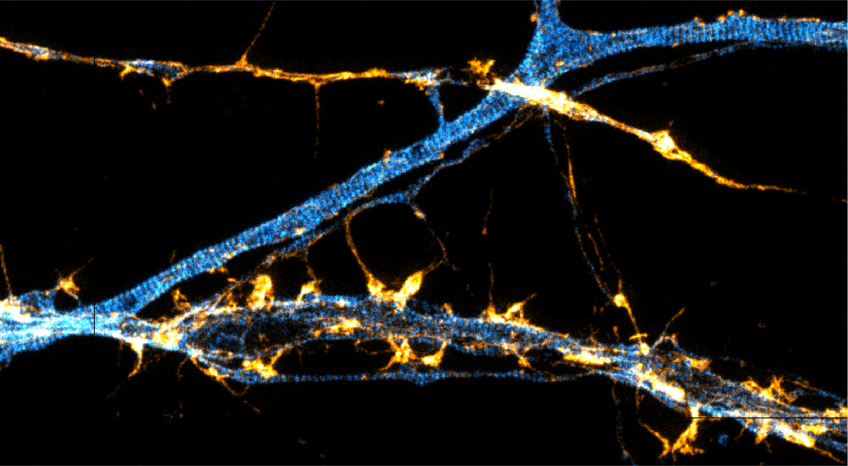
Department of Optical Nanoscopy
Following conventional wisdom, the resolution of light microscopy is limited by diffraction to about half the wavelength of light, which is why conventional light microscopes fail to distinguish object details that are closer together than ~200 nanometers. Stefan Hell and co-workers have broken this century-old barrier by developing novel fluorescence microscopes featuring diffraction-unlimited spatial resolution. Thus, they also laid the foundation of a new scientific field: super-resolution fluorescence microscopy, also known as nanoscopy.
Stefan Hell's department is developing light microscopes with a spatial resolution down to a few nanometers, particularly, but not exclusively, for imaging living cells and tissues. To surpass the diffraction barrier, all these methods utilize a reversible transition or switch of fluorescent labels between a bright and a dark state. Since these super-resolution concepts fundamentally rely on transitions between molecular states, novel labels are required that can be optically prepared in at least two different states. Consequently, the group also pioneers the chemical synthesis and application of new labeling methods and techniques to improve the performance of the labels’ switching behavior to separate close-by molecules.
Current efforts of this interdisciplinary group of physicists, chemists and biologists aim to improve resolution, contrast, speed and versatility of optical nanoscopy. The outstanding biomedical research environment in Heidelberg and beyond allows for excellent collaborations.
MINFLUX, a recent breakthrough concept, has closed the gap to molecular (~1 nm) resolution. A major thrust of work in the department is now to explore this new frontier of ultimate resolution and unlock the potential for scientific discovery.
Selected references
Hell, S.W. "Far-Field Optical Nanoscopy." Science 316, 1153-1158 (2007).
Hell, S.W. "Nanoscopy with Focused Light (Nobel Lecture)." Angew. Chem. Int. Ed. 54, 8054-8066 (2015).
Göttfert, F., T. Pleiner, J. Heine, V. Westphal, D. Görlich, S.J. Sahl, S.W. Hell. "Strong signal increase in STED fluorescence microscopy by imaging regions of subdiffraction extent." PNAS 114, 2125-2130 (2017).
Heine, J., M. Reuss, B. Harke, E. D'Este, S.J. Sahl, S.W. Hell. "Adaptive-illumination STED nanoscopy." PNAS 114, 9797-9802 (2017).
Schneider, J., J. Zahn, M. Maglione, S.J. Sigrist, J. Marquard, J. Chojnacki, H. Kräusslich, S.J. Sahl, J. Engelhardt, S.W. Hell. "Ultrafast, temporally stochastic STED nanoscopy of millisecond dynamics." Nature Methods 12, 827-830 (2015).
Balzarotti, F. , Y. Eilers, K. C. Gwosch, A.H. Gynna, V. Westphal, F.D. Stefani, J. Elf, S.W. Hell. "Nanometer resolution imaging and tracking of fluorescent molecules with minimal photon fluxes." Science 355, 606-612 (2017).
Eilers, Y., H. Ta, K.C. Gwosch, F. Balzarotti, S.W. Hell. "MINFLUX monitors rapid molecular jumps with superior spatiotemporal resolution." PNAS 115, 6117-6122 (2018).
Wirth, J.O., L. Scheiderer, T. Engelhardt, J. Engelhardt, J. Matthias, S.W. Hell. “MINFLUX dissects the unimpeded walking of kinesin-1.” Science 379, 1004-1010 (2023).